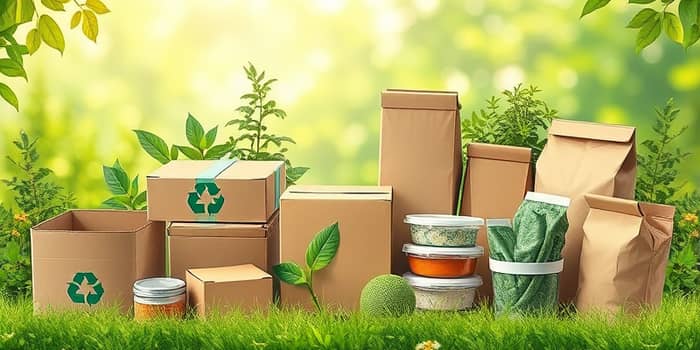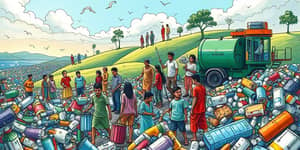Sustainable packaging has emerged as a powerful response to the growing environmental crisis. Brands and consumers alike are seeking ways to minimize environmental impact throughout the lifecycle of the products they produce and purchase. This article explores the definition, materials, benefits, obstacles, and where to source truly sustainable packaging solutions.
Defining Sustainable Packaging
At its core, sustainable packaging encompasses materials and processes designed to reduce ecological footprints from production to end-of-life disposal. It relies on renewable, recyclable, biodegradable, or compostable materials and emphasizes design strategies that shrink package size and weight.
This practice aims to fulfill current functional and economic needs without compromising the ability of future generations to thrive. It is an ongoing journey of improvement rather than a fixed destination.
Key Materials and Types
Companies are adopting a diverse array of materials to meet sustainability goals. These include:
- Recyclable substrates such as PET, HDPE plastics, cardboard, and paper
- Compostable biopolymers like PLA derived from starch and cellulose-based films
- Biodegradable options designed to break down through natural biological processes
- Plant-based and reusable packaging that supports multiple product lifecycles
Each material type carries unique advantages and limitations, and true sustainability demands a lifecycle view of sourcing, production, distribution, use, and disposal.
Environmental and Business Benefits
Adopting sustainable packaging can deliver significant positive outcomes for both the planet and the bottom line. Benefits include:
- Reduced carbon footprints and greenhouse gas emissions through renewable inputs
- Less landfill waste as materials biodegrade or compost into organic matter
- Enhanced consumer perception and brand reputation by aligning with eco-conscious values
- Cost savings from optimized package design and streamlined end-of-life processes
Consumer and Regulatory Drivers
Public concern over plastic waste is soaring: 89% of Australian consumers and 85% of Americans and Britons are highly worried about packaging pollution. Demand for sustainable goods has grown by 71% in recent years.
Governments are responding with increasingly stringent regulations. Extended Producer Responsibility (EPR) laws in various U.S. states now mandate reporting, recycled content quotas, and phased bans on non-recyclable packaging. By 2032, producers in certain jurisdictions must ensure packaging is recyclable, refillable, or reusable, or secure special exemptions.
Strategies for Adoption
Businesses can integrate sustainable packaging by following several best practices:
- Reducing overall packaging size and eliminating unnecessary layers
- Sourcing recycled plastic over virgin resins to fostering a circular material economy
- Implementing return, refill, and reuse programs that extend product lifecycles and reduce waste
- Employing eco-friendly void fillers, adhesives, and inks
- Optimizing packaging storage and logistics to cut transportation impacts
Clear communication of disposal instructions and material claims is critical. Labels should emphasize clear labeling and consumer education to prevent contamination in recycling streams.
Challenges and Lifecycle Considerations
Despite the promise of sustainable packaging, several hurdles remain. Greenwashing risks have risen as some brands misuse vague terminology like “eco-friendly” without independent verification. Agencies such as the U.S. Federal Trade Commission now provide guidelines to curb deceptive claims.
True sustainability demands a cradle-to-grave assessment. A package might be compostable but manufactured with high energy inputs, shifting environmental burdens elsewhere. Lifecycle analysis ensures materials, production, distribution, use, and end-of-life processes are all optimized.
Where to Find Sustainable Packaging
Finding reliable suppliers is essential for implementation. Key sources include:
- Specialist packaging manufacturers such as TIPA and GWP Group offering biodegradable films and recycled-content solutions
- Industry directories like Thomasnet and NGO resources such as the Sustainable Packaging Coalition
- Retailers and major consumer goods brands that market sustainable packaging as a competitive edge
- Certified suppliers bearing FSC, SFI, TÜV, BPI, or other recognized seals for recycled, compostable, or responsibly sourced materials
By partnering with certified providers and leveraging industry networks, businesses can confidently source packaging that meets both environmental and performance requirements.
Looking Ahead
The journey toward sustainable packaging is an evolving landscape of innovation, regulation, and consumer expectation. Companies that embrace continuous improvement, transparent communication, and holistic lifecycle thinking will not only reduce environmental harm but also enhance their market position.
As global pressures intensify, packaging solutions must advance beyond single-use mindsets toward enduring, regenerative systems. Through strategic design, material selection, and responsible sourcing, sustainable packaging can become a mainstream practice that secures a healthier planet and future prosperity.
References
- https://www.weavabel.com/blog/what-are-the-benefits-of-eco-friendly-packaging
- https://tipa-corp.com/sustainable-packaging/
- https://www.thomasnet.com/insights/sustainable-packaging/
- https://en.wikipedia.org/wiki/Sustainable_packaging
- https://www.sustainable-markets.com/2024/10/29/u-s-packaging-laws-epr-programs-and-reporting-requirements-by-state/
- https://www.sourceful.com/blog/how-to-make-packaging-more-sustainable
- https://www.gwp.co.uk/guides/what-is-sustainable-packaging/










